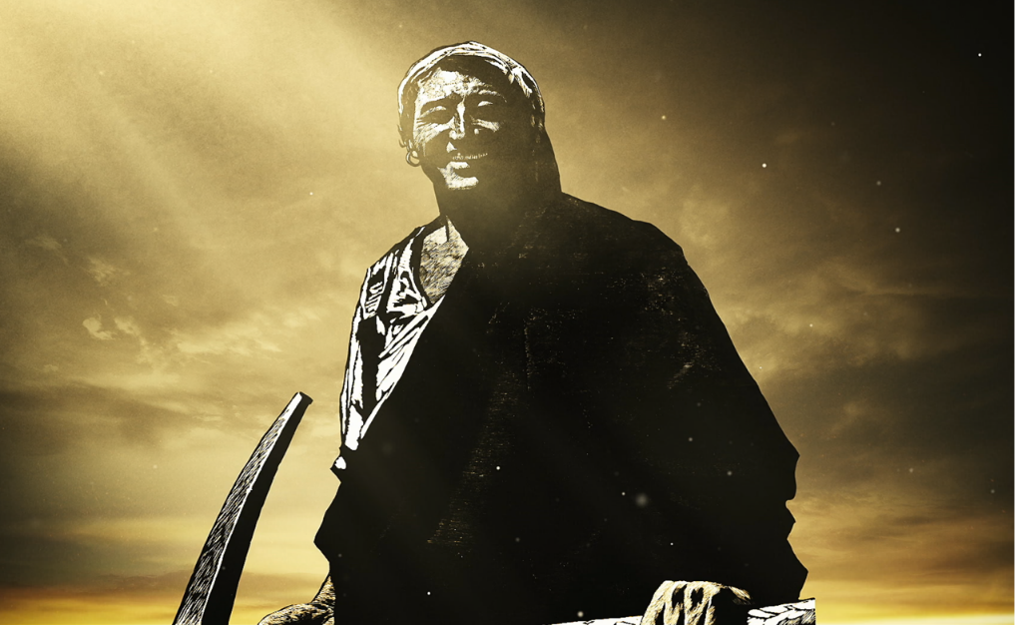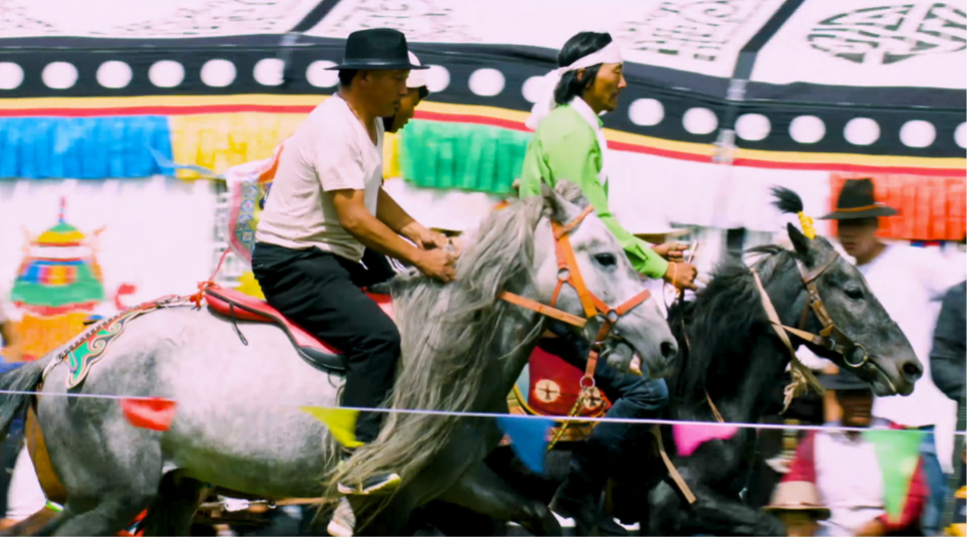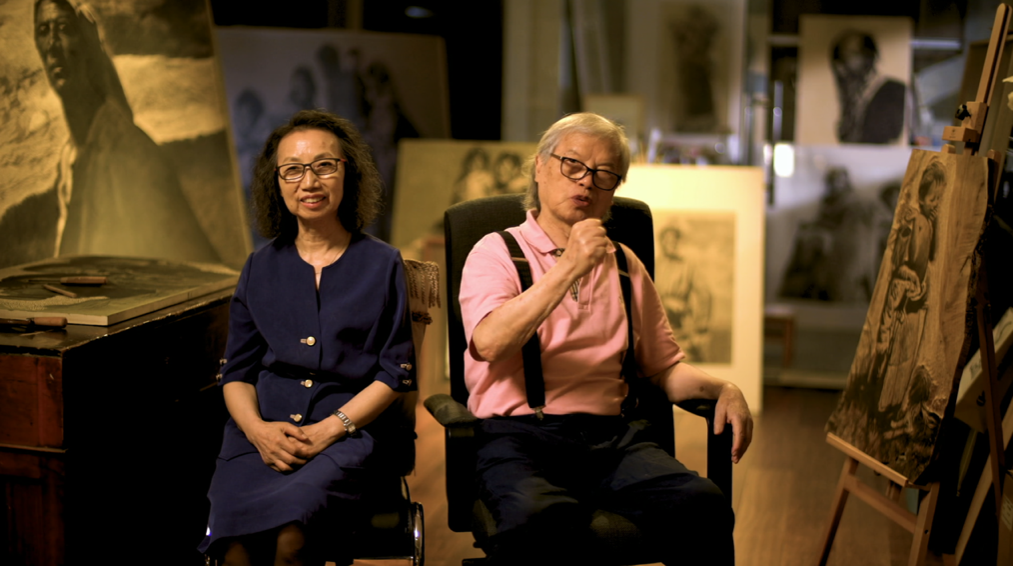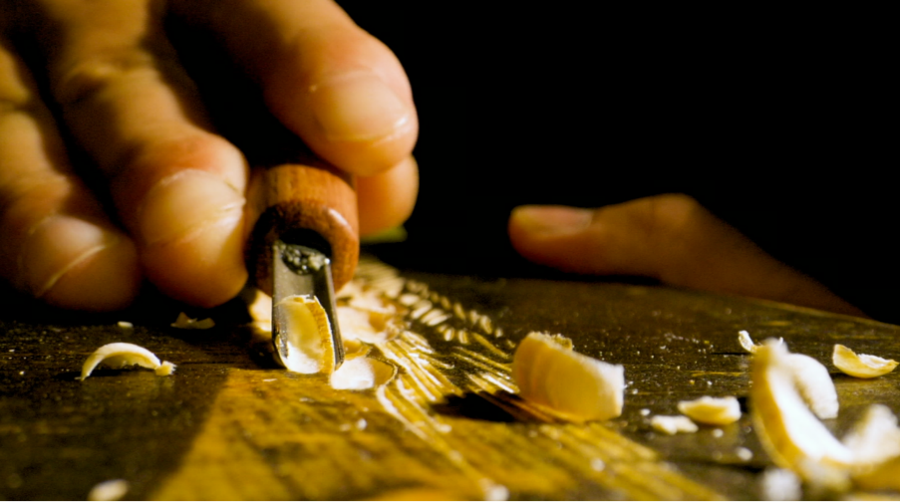
A rendering of "The Master." /CGTN
A rendering of "The Master." /CGTN
Woodcut ranks among the oldest forms of printmaking. In the history of contemporary Chinese fine art, there is a grand masterpiece of this genre that has served as a source of inspiration for professional artists and the general public for decades.
Encompassing thousands of blade strokes, "The Master" portrays a Tibetan man. Created 40 years ago by husband-and-wife team Xu Kuang and A Ge, it accentuates the human presence in a straightforward and uncomplicated manner, sounding an ode to the ancient Qinghai-Tibet Plateau. This representative Chinese woodcut classic has also been intertwined with its creators' artistic career and life story.
In 1977, the year before China adopted its reform and opening-up policy, Xu Kuang and A Ge embarked on a journey to the country's Tibet Autonomous Region, gathering materials and getting inspiration for a woodcut work themed on the region's peaceful liberation in 1951.
Recalling this unforgettable trip, A Ge described Lhasa, the capital of Tibet Autonomous Region, as "a city immersed in music." "We'd never seen such festivities. All the Tibetans were gathering in the parks and celebrating their holidays. So, we immediately set about sketching," recalled A Ge.

A Tibetan horseracing event. /CGTN
A Tibetan horseracing event. /CGTN
Having spent eight months under the clear blue skies and snowy peaks of Tibet, Xu Kuang and A Ge made hundreds of sketches, in their bid to capture the perfect image. And finally, they found their muse.
"There was a horse-racing event in the Dangxiong Grassland, where we ran into this Tibetan man. He looked just wonderful. I told Xu Kuang there was no time to draw a sketch. So he picked up his camera and took many pictures of the guy," said A Ge in recalling this chance encounter with the subject of "The Master."
A split-second snapshot recorded an image that would later be immortalized in a more traditional art form, with this Tibetan man playing a key role in a major work in China's art history.
By the time Xu Kuang and A Ge were busy creating their work, China was reviving its National Art Exhibition, for which A Ge wanted to submit "The Master." However, just ten days before the deadline, A Ge became unwell due to pregnancy and had to stop working. This forced the couple to make a tough decision.
"I was struggling so Xu Kuang had to take over, as there wasn't much time left. I told him to dispense with the background and just keep the main figure," said A Ge. "It turned out to be a wise choice. It focused people's attention on the subject, I think," added Xu Kuang.

Xu Kuang (R) and A Ge share the origin story of "The Master." / CGTN
Xu Kuang (R) and A Ge share the origin story of "The Master." / CGTN
Despite the fact time was running out, Xu Kuang refused to compromise. He insisted on capturing the "soul" of the subject. Capitalizing on his finely honed skills with the knife, he rendered the engraving tight and dense to strengthen the effect of shading, while using the round blade to accentuate the sense of volume.
The man's hands gripping his pickaxe speak of his strong willpower, which had to be made visible through rapid, spontaneous cutting. The most original aspect, however, was the depiction of the front of the hero’s darkly colored Tibetan robe.
"I knocked the level blade across the wood surface. There's not much cutting, but the mass of black got a layered feel that echoes the human visage," said Xu.

With the image translated onto paper, "The Master" finally emerged. This Tibetan man could be a herder mending his fences, or a casual spectator of the race, but his posture embodied the spirit of a strong and forward-looking Tibet full of hope.
"The Master" also inspired the nation.
It received the Gold Award at the 5th China National Exhibition of Fine Arts, with its innovative techniques being widely admired. Following the arrival of "The Master," China's woodcut artists have since recorded the lives of numerous "masters" of their own destinies.
Now, after over 40 years, the artwork still looks fresh and vivid, retaining its place of pride in the artists' studio. As a testament to the couple's fruitful career, it also records the moment of the beginning of a new era.